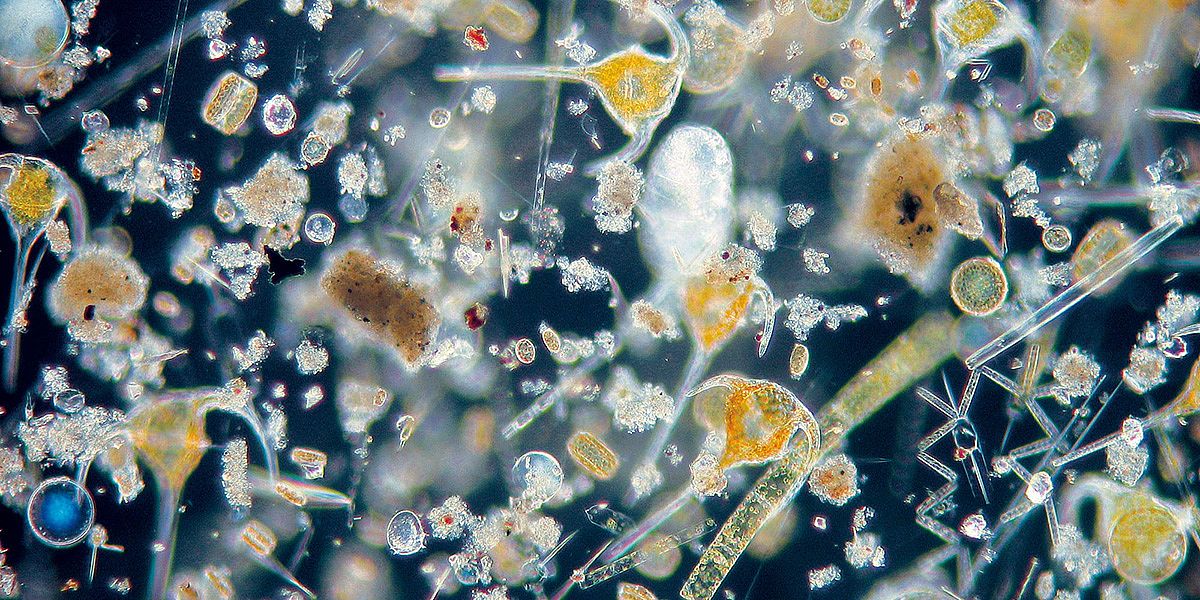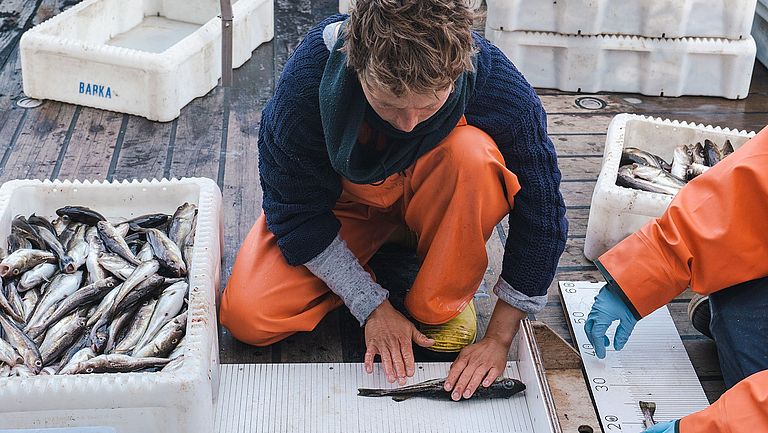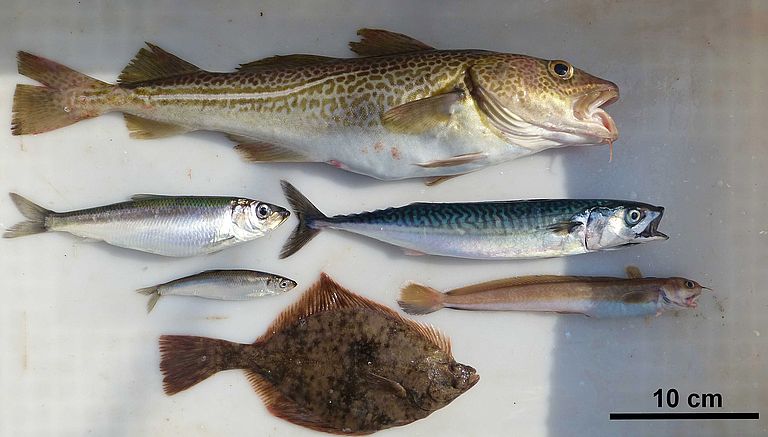- Joint press release of the German Consumer Advice Centres, GEOMAR Helmholtz Centre for Ocean Research Kiel, Deutsche Umwelthilfe, Naturschutzbund Deutschland and World Wide Fund For Nature -
In Northern Europe alone, around 200 fish stocks are commercially exploited, but only a few of them meet internationally binding criteria for sustainable fishing. The GEOMAR Helmholtz Centre for Ocean Research Kiel, together with the German Consumer Advice Centres and several NGOs, publishes an annual list of marine fish that consumers can still eat with a reasonably clear conscience. The list has become shorter this year, with only twelve species still fulfilling the criteria for sustainable fishing. Last year, mackerel and sprat from the Baltic Sea were given a conditional recommendation, but as the necessary safeguards have not been put in place and overfishing continues, these species can no longer be recommended.
Regional flatfish such as plaice, dab and flounder from the Baltic Sea remain on the list. Selected herring stocks, chum and sockeye salmon from Alaska are also on the list. In total, twelve stocks are recommended if caught using acceptable fishing methods.
Dr Rainer Froese, marine ecologist and fisheries scientist at the GEOMAR Helmholtz Centre for Ocean Research in Kiel, explains: “Fish such as cod, herring and sprat play a key role in the ecosystem as predators or prey. However, their stocks must be sufficiently large and not overfished, which is no longer the case for sprat, for example”.
The German Environmental Aid Association (DUH) also stresses that sustainable, stock-preserving fishing is extremely important to preserve fish as part of our diet, but also in the ecosystem:
Dr Katja Hockun, marine protection team leader at DUH, explains: “Our oceans are under pressure: the climate crisis, pollution, infrastructure expansion and fishing are all putting pressure on the ecosystem. If fishing is to have a future, only as much can be caught as can be replenished naturally. Sustainable fishing gear must also be used consistently. With the Good Fish list, we want to help consumers understand what is important when buying fish”.
Consumers have a choice
Demand determines what the market will supply. Sustainable purchasing choices can therefore help to influence the environmental impact of fishing.
Dr Britta Schautz, food and nutrition expert at the Verbraucherzentrale Berlin: “Many consumers like to eat fish and are generally aware of the problem of overfishing. But they lack specific information about which stocks are affected. With the help of this list, everyone can easily decide for themselves which fish can still be on the table this Christmas”.
Dr Kim Detloff, Head of Marine Conservation at NABU, explains: “Fish populations are collapsing, fisheries are going out of business. The fisheries policy of recent years has failed. The end of the transformation must be a system of quality and sustainability. Consumers have an important role to play in ensuring that only 'good fish' ends up on our plates”.
Dr Philipp Kanstinger, WWF's fisheries expert, gives consumers another shopping tip: “If fish is part of your festivities, carp from regional pond farming is a very good choice for Christmas, in addition to marine fish from the Good Fish list”.
How the list works
For unprocessed fish and frozen products, information on the species, fishing method and fishing area is mandatory. These should be carefully checked against the list to ensure that no fish from a highly endangered stock ends up in the shopping basket. However, the labelling required by law is not always detailed enough to judge whether a product is “good fish”. When in doubt, it is advisable to make a specific enquiry.
In addition to origin, the fishing method is an important criterion. Different fishing gears have different effects on fish stocks, the seabed and other animals in the ecosystem. Bottom trawls are often particularly harmful because of the high bycatch they take and the damage they do to the seabed. Yet they are still used in many places, including marine protected areas.





